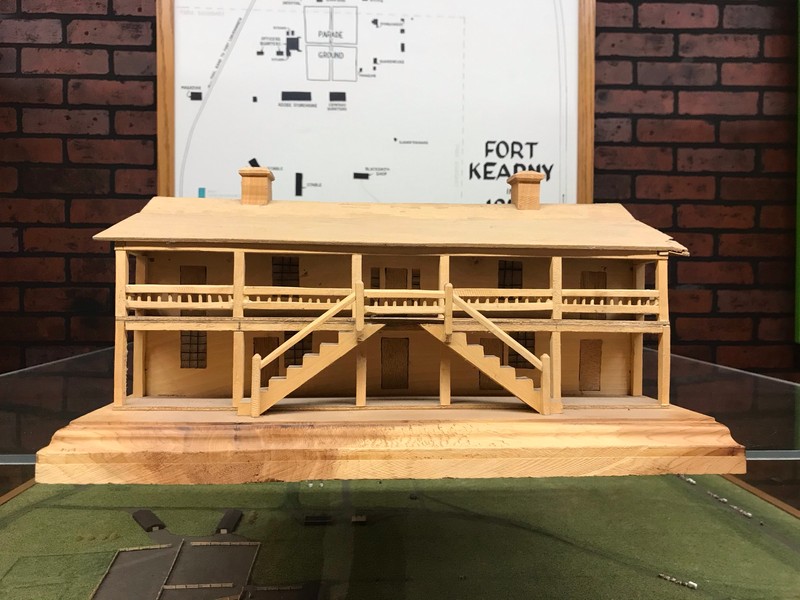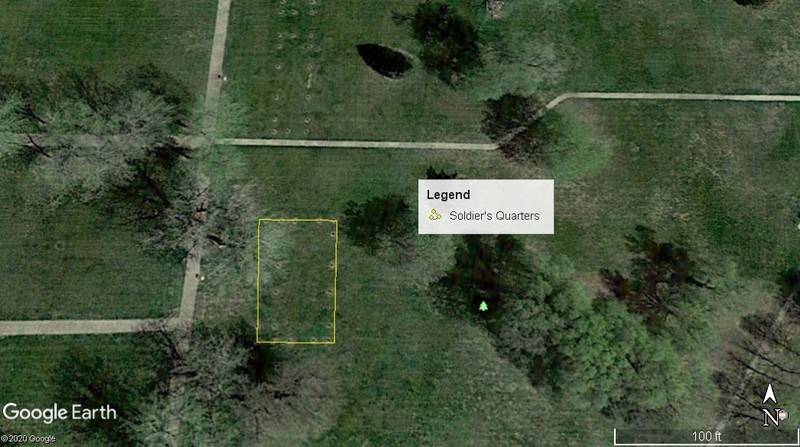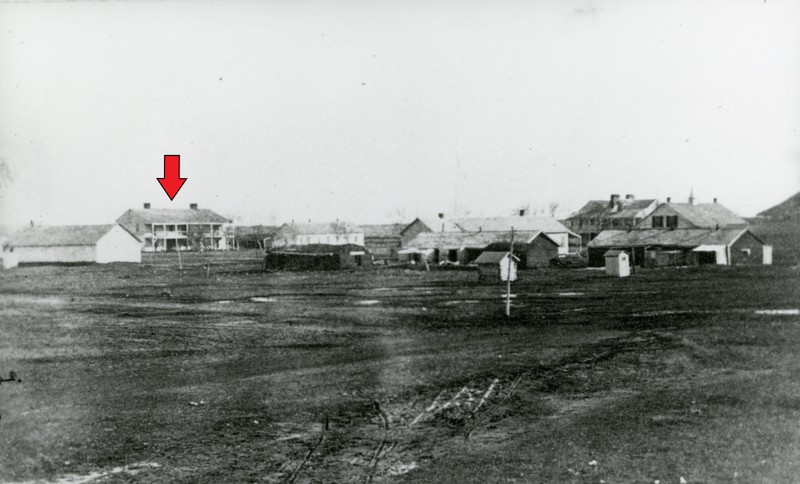Fort Kearny Two Story Soldiers' Quarters
Introduction
Text-to-speech Audio
Images
Replica of the two story soldiers quarters

Aerial map showing the location of the soldiers quarters outline

Two story soldiers quarters - 1866

Backstory and Context
Text-to-speech Audio
The life of officers at Fort Kearny and at other frontier posts was quite different than that of enlisted men. A very wide and deep divide of rank existed and separated the commissioned personnel from the non commissioned. The officers were, for the most part, married and lived with their families in the officers' quarters. Very few enlisted men were married, those who were had married after joining the service, since it was the general rule that only single men were enlisted. The officers and their families moved in their own social circles, and at Fort Kearny, with only a few officers on duty, this circle was small and select.
During the Civil War, life at Fort Kearny was influenced by the officer personnel on duty. Commissions in the volunteer service were issued by the governor of the state in which the organization originated. When the regiments were mustered into Federal service, these commissions were honored without examinations into the individuals holding them. Politics were actively involved in securing these appointments. This resulted in a commissioned staff of uneven quality.
Constant quarreling and bickering went on among the officers at Fort Kearny, not unlike any other post where volunteer troops were stationed. The superior officers tried to remove the undesirable officers by transfer or court-martial. Junior officers attempted to oust their superiors by political means or to bring them into discredit in any way possible. This had a negative effect on the morale of the entire post and caused constant tension.
One way the soldiers blew off steam was by visiting the nearby town of Kearney City or more commonly known as Dobytown. The community was established in 1859 and was located three miles west of the fort. The town was given the common name of Dobytown because it contained mostly adobe buildings. As one of the most important stops for travelers between Independence, Missouri, and the west, Dobytown evolved to meet the needs of the thousands of soldiers, traders, teamsters, and pioneers traveling west. Gambling, liquor, and prostitution were among its main attractions. Dobytown also served as the major outfitting point west of the Missouri River, the center of frontier transportation from 1860 to 1866. A Pony Express station was located in Dobytown and it was the first county seat of Kearney County.
Sources
Post Inspection, Fort Kearny, N.T. June 28, 1864.
Mantor, Lyle E. "The History of Fort Kearny." Ph.D. diss., 1938.
"National Register Information System". National Register of Historic Places. National Park Service. April 15, 2008.
History Nebraska
